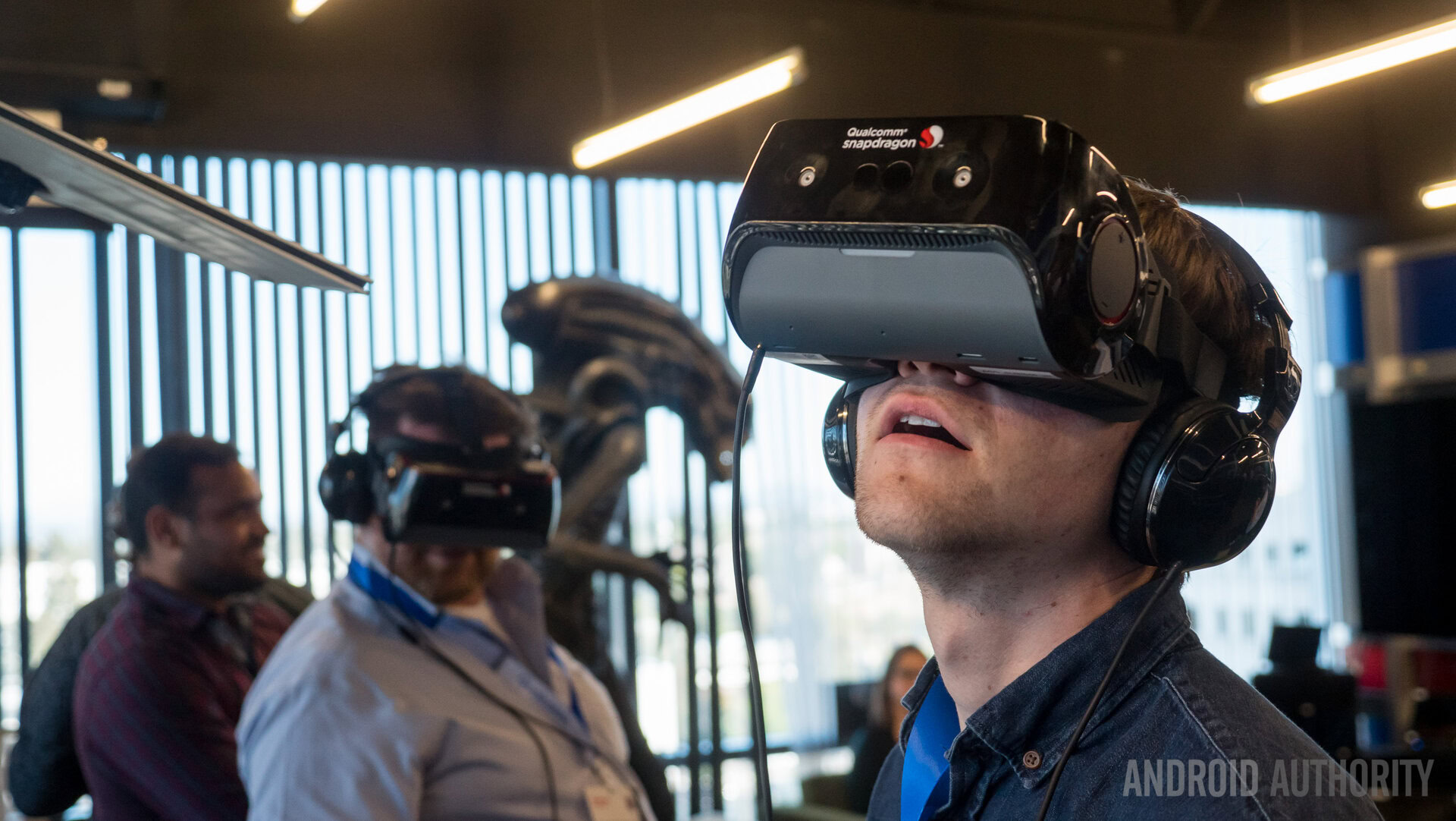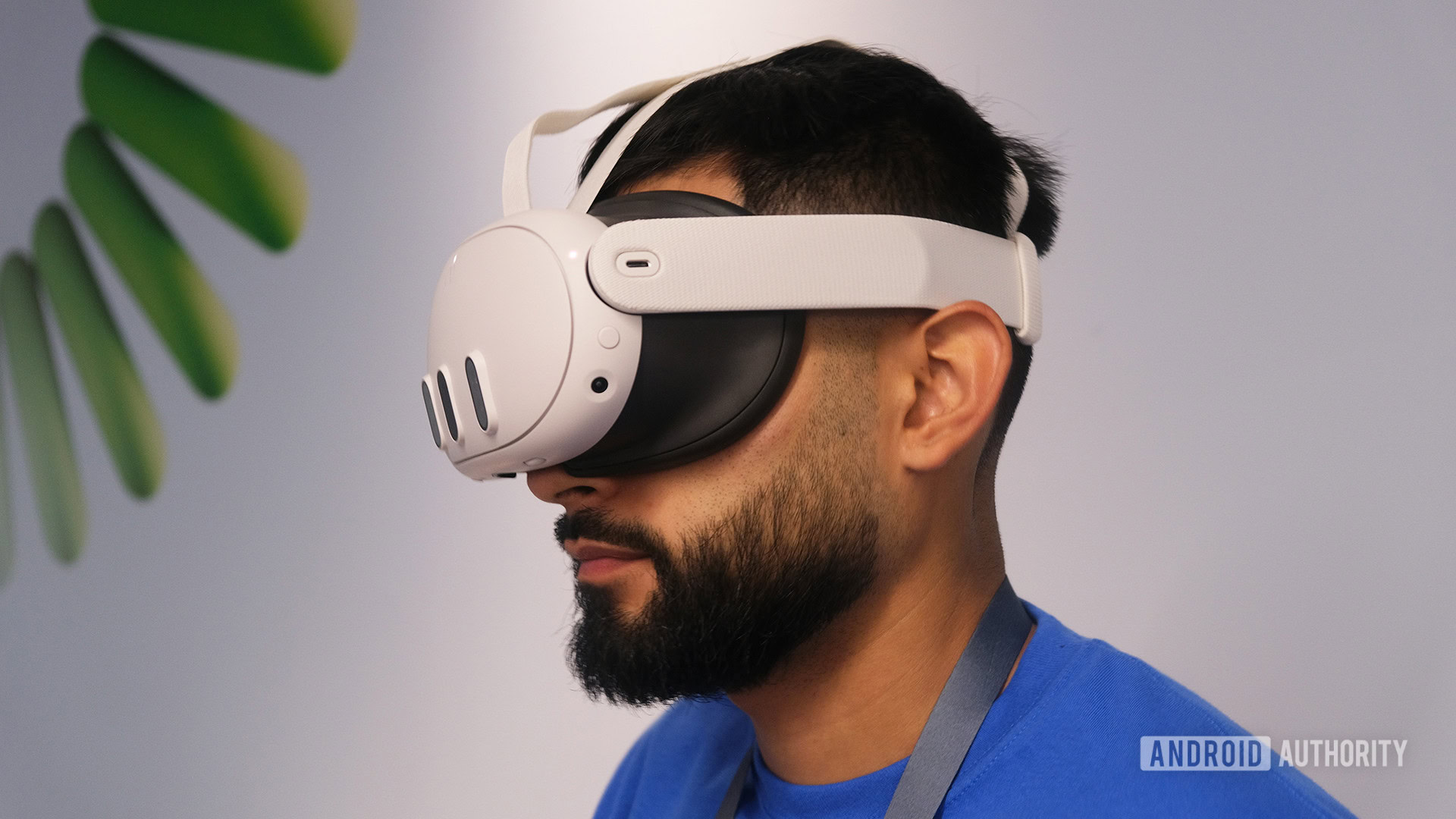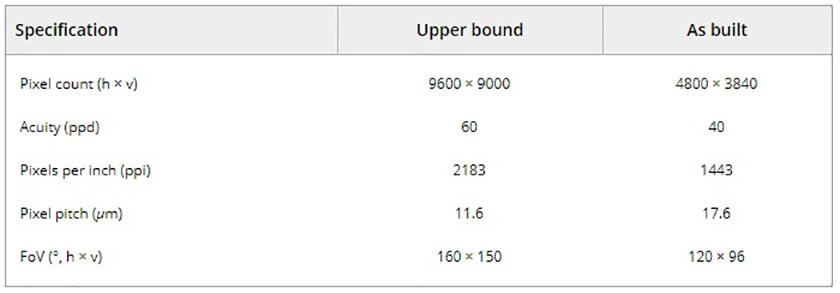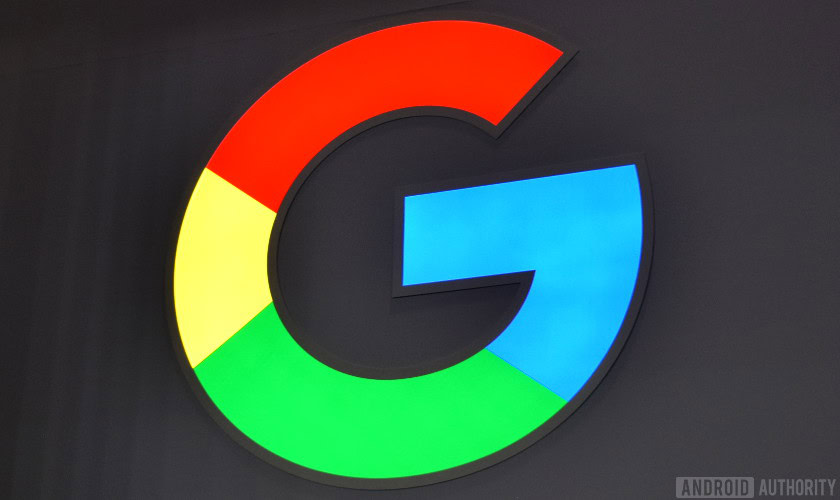Affiliate links on Android Authority may earn us a commission. Learn more.
Google and LG unveil world’s highest-resolution OLED on-glass VR display
May 22, 2018

- Google and LG unveiled a new display panel designed for VR headsets.
- The panels are twice as good as the ones in the HTCVive Pro, and about half as good as human vision.
- Although the displays are incredible, they are just proof-of-concept models at the moment.
A few months ago, we told you that Google and LG would unveil an incredibly high-resolution display designed for augmented and virtual reality headsets. Today, the two companies unveiled that very display, and it’s a doozy.
As expected, the 4.3-inch OLED 18MP display has a resolution of 4,800 x 3,840. The display has a pixel density of 1,443PPI and a 120Hz refresh rate. Google and LG referred to it as the “world’s highest-resolution OLED on-glass display.”
For comparison’s sake, the HTC Vive has two 3.6-inch displays with resolutions of 1,200 x 1,080. The higher-end HTCVive Pro has two 3.5-inch displays with resolutions of 1,600 x 1,440. The Vive Pro maxes out at 615PPI, making this new LG panel about 57% better than HTC’s best offering.

However, there’s already one display that’s better than anything on offer, and that’s your own vision. A person with great vision sees in an estimated resolution of 9,600 x 9,000 with a PPI density of 2,183. In other words, this new display from Google and LG is about half as good as our own eyes. Check out the chart below:

However impossible it may seem, that’s what Google and LG are ultimately going for: virtual reality displays that are so crisp and clear that we can’t tell the difference between our own vision and the reality depicted in our headset. Creepy.

But don’t get too excited about seeing these new panels in a VR headset any time soon. When 9to5Google asked when we could see these high-resolution displays in a consumer product, Google rep Carlin Verri noted that the companies started this project to push the industry forward. In other words, this is just proof that these displays can be created, and there are no plans to use them in any consumer products yet.
In any case, it would require incredible processing power to make use of two displays with that kind of pixel density in a headset. Not only would you have to be tethered to a PC, but the PC would have to be a ridiculous powerhouse to even begin to process that kind of imagery.
Still, the fact that this can be done is pretty neat. You can read the detailed report from Google and LG on the technology here.